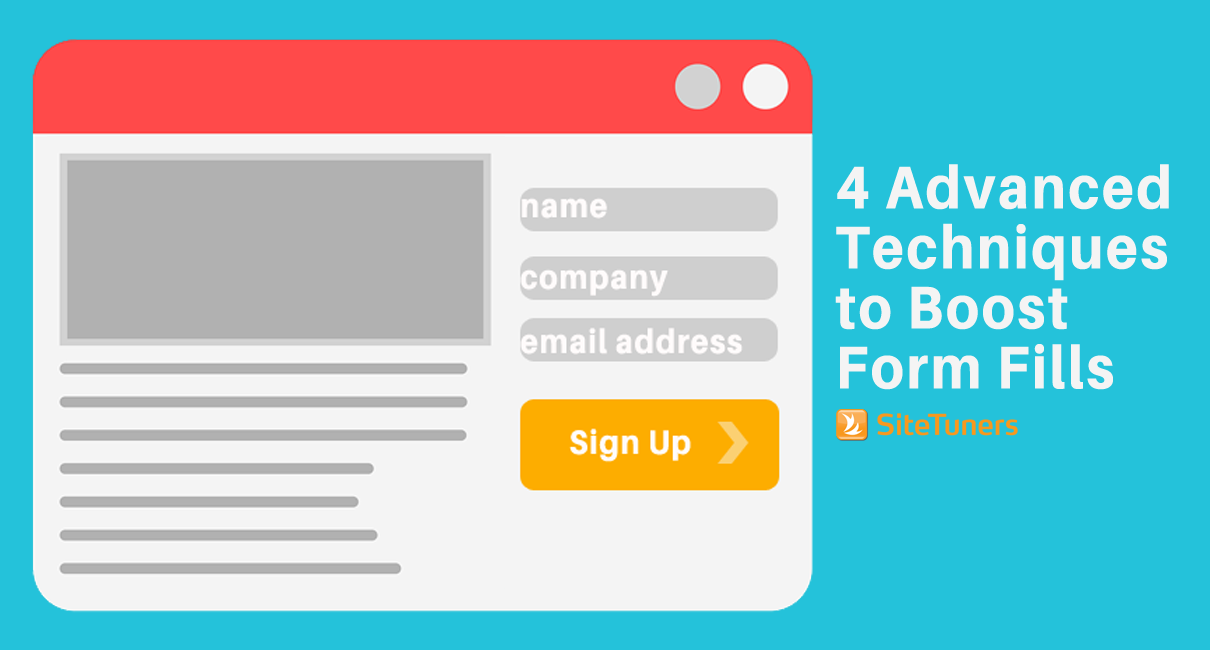
Still, creating optimal forms pays dividends, so that uphill battle needs to be fought. The four items below vary in terms of cost and complexity, but these should help boost the form fill rate for your site.
Personalize your content in real-time
There are three ways to approach this. You can personalize your content based on the CMS you use, (Adobe and IBM both have offerings where personalization is one of the selling points) you can use third party add-ons, or you can integrate marketing automation tools like Infusionsoft, Marketo, and Eloqua into your processes.
Depending on how you do it, you may be able to serve content and form fields based on different types of conditions:
-
- For international audiences, you’ll be able to serve geographically relevant content and fields.
-
- For visitors who have dropped off in the middle of filling out a form, you can take them back to the place where they left instead of the start of the process.
-
- For returning visitors who have already acted on something, like downloading a White Paper, you can show them more contextually relevant topics.
-
- For visitors from Google or Facebook ads, you can use the data sent over to create page headlines that tie to the ad message right on the form page.
Use Data Append to create shorter forms
Shorter forms generally translate to higher conversion rates most of the time, and data append allows you to shorten your forms considerably. Companies like Demandbase or Monetate offer data append strategies that can help you capitalize in different ways:
Demographics
You can “default” income on forms based on neighborhood, which in turn will be based on the visitor’s IP address.
Psychographics
In places where there’s a lot of homogeneity (like the Midwest), culture can be guessed at from the location.
Company
Companies are typically tied to known IP addresses, so you can also “default” visitors from Oracle, for instance, to the company on your forms.
Geo-targeting
Country fields can be pre-filled, and for the US, you can typically pre-fill even the state.
You should always allow the visitor to change these defaults, even if you have a very high confidence on the data. After all, on top of issues with IP addresses, they may be filling the forms for someone else.
Validate Emails in Real-TIme
The average invalid rate on registration forms is 6.41% across all industries, after you subtract malformed email addresses. This means that at minimum, you should have something that checks the format, like having 2 @ symbols, but you should by no means stop there:
-
- Do not delay visitors with validation checking time. Even a 2-3 second delay online will hurt the business.
-
- Only prompt for correction once, and then let the visitors through. If they really want your information, you can get their correct address later.
Companies like LeadSpend validate email addresses. That, in turn, reduces your risks. The more emails you send out to undeliverable addresses, disposable addresses, typo domains, parked domains, and abuse reporting mailboxes, the less likely your next set of emails will be delivered.
Make the Right Offer at the Right Time
Of course, automation and personalization can only take you so far if lead gathering strategy is wrong. Your strategy with forms should be similar to your strategy with calls-to-action: do not show middle or late stage forms to early stage visitors.
Instead, create a series of smaller conversions, and build a complete profile using progressive disclosure:
-
- Ask for nothing (or very little) early in the process. Have links in that downloadable asset that will take the visitor to a place that’s going to ask for an email for more information.
-
- Ask for more in the middle stages of the sales cycle. This is the part where you engage with the visitor, so ask for an email and get more information.
-
- Ask for nothing (or very little) late in the process. Get out of the way when the visitor is getting close to the action step.
Putting It All Together
That’s it. None of the strategies outlined will get you a 100% form completion rate. However, using …
- personalization,
- data append,
- email validation, and
- progressive disclosure
… should give you an edge over the competition.
Learn more advanced optimization techniques from SiteTuners CEO Tim Ash and LOGMyCalls CEO Jason Wells. Watch the FREE webinar:
Work with the best!Kickstart your optimization with a 90-minute Website Review from the pioneers in conversion rate optimization. Our CRO experts at SiteTuners can help diagnose your website from a conversion and usability perspective. |


